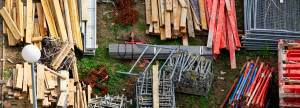Now these things having been so prepared…II
NAS Hebrews 9:1-10 Now even the first covenant had regulations of divine worship and the earthly sanctuary. 2 For there was a tabernacle prepared, the outer one, in which were the lampstand and the table and the sacred bread; this is called the holy place. 3 And behind the second veil, there was a tabernacle which is called the Holy of Holies, 4 having a golden altar of incense and the ark of the covenant covered on all sides with gold, in which was a golden jar holding the manna, and Aaron’s rod which budded, and the tables of the covenant. 5 And above it were the cherubim of glory overshadowing the mercy seat; but of these things we cannot now speak in detail. 6 Now when these things have been thus prepared, the priests are continually entering the outer tabernacle, performing the divine worship, 7 but into the second only the high priest enters, once a year, not without taking blood, which he offers for himself and for the sins of the people committed in ignorance. 8 The Holy Spirit is signifying this, that the way into the holy place has not yet been disclosed, while the outer tabernacle is still standing, 9 which is a symbol for the present time. Accordingly both gifts and sacrifices are offered which cannot make the worshiper perfect in conscience, 10 since they relate only to food and drink and various washings, regulations for the body imposed until a time of reformation.
Verse 8 The pastor begins to explain the significance of the priests’ ministry in the “earthly sanctuary” as just described in vv. 6-7, As always, the Scripture is of immediate relevance. Thus, “the Holy Spirit” as the inspirer of Scripture is even now “revealing” the inadequacy of the old order through the biblical description of its limitations. The pastor claims no esoteric divine disclosure. What he has to say is drawn from the plain biblical description of the old order understood in light of its fulfillment.
Above all else, this description of ministry in the “earthly sanctuary” reveals that “the way into the (heavenly) Sanctuary had not yet been disclosed while the First Tent still had validity. It is important to clarify the referents of both “Sanctuary” and “First Tent.” That “Sanctuary” refers not to the earthly Most Holy Place but to the heavenly “Sanctuary” in which Christ is a “minister” (8:2). “First Tent” however, refers to the first part of the Mosaic shrine, the Holy Place, rather than to the entire Mosaic structure as temporal precursor of the “true” (8:2) “greater and more perfect Tent” (9-11). There are several weighty reasons for preferring this interpretation. First, in the immediate context the pastor has consistently used “First Tent” and “second” to distinguish the earthly “Holy Place” from the earthly “Most Holy Place” (vv. 2,3,6,7,). Second the pastor could hardly call an ”earthly sanctuary” the “First Tent” since it did not precede the eternal heavenly Sanctuary of which it was a copy (8:4-5). He can refer to the Old and New Covenants as “first” and “second” (8:7,13) because they followed one another in temporal sequence, but he cannot use this language for their respective sanctuaries. Furthermore, the identification of the First Tent with the Holy Place makes good sense of what the pastor has said. The First or Old Covenant was a covenant of the Holy Place. thus in vv. 2-5 the pastor emphasized the impenetrable barrier between the Holy Place and the Most Holy Place. In v. 6 the rituals of the First Covenant were confined to the Holy Place, where they were endlessly repeated without providing access to anything more. They could not even penetrate the boundary between the earthly Holy Place and the Most Holy Place. The high priest’s annual entrance into the Most Holy Place, described in v. 7, was only “the exception that proved the rule. He went “alone,” only “once a year,) and only into the earthly Most Holy Place. OT religion might have been oriented toward the Most Holy Place, but it was confined to the Holy Place. This very fact showed its inability to bring people into God’s presence and its nature as foreshadowing a fulfillment to come. By contrast, the New Covenant has no Holy Place but only the Most Holy Place hat is “heaven itself.” (9:24)
With this understood, it becomes clear why the pastor says that the way into the true heavenly “Sanctuary” was not “made known” or revealed as long as the Holy Place and its rituals were in force. If the outer “Tent” could not even give access to the inner “Tent” what would give access to heaven itself?
Professor Thomas A. Rohm



